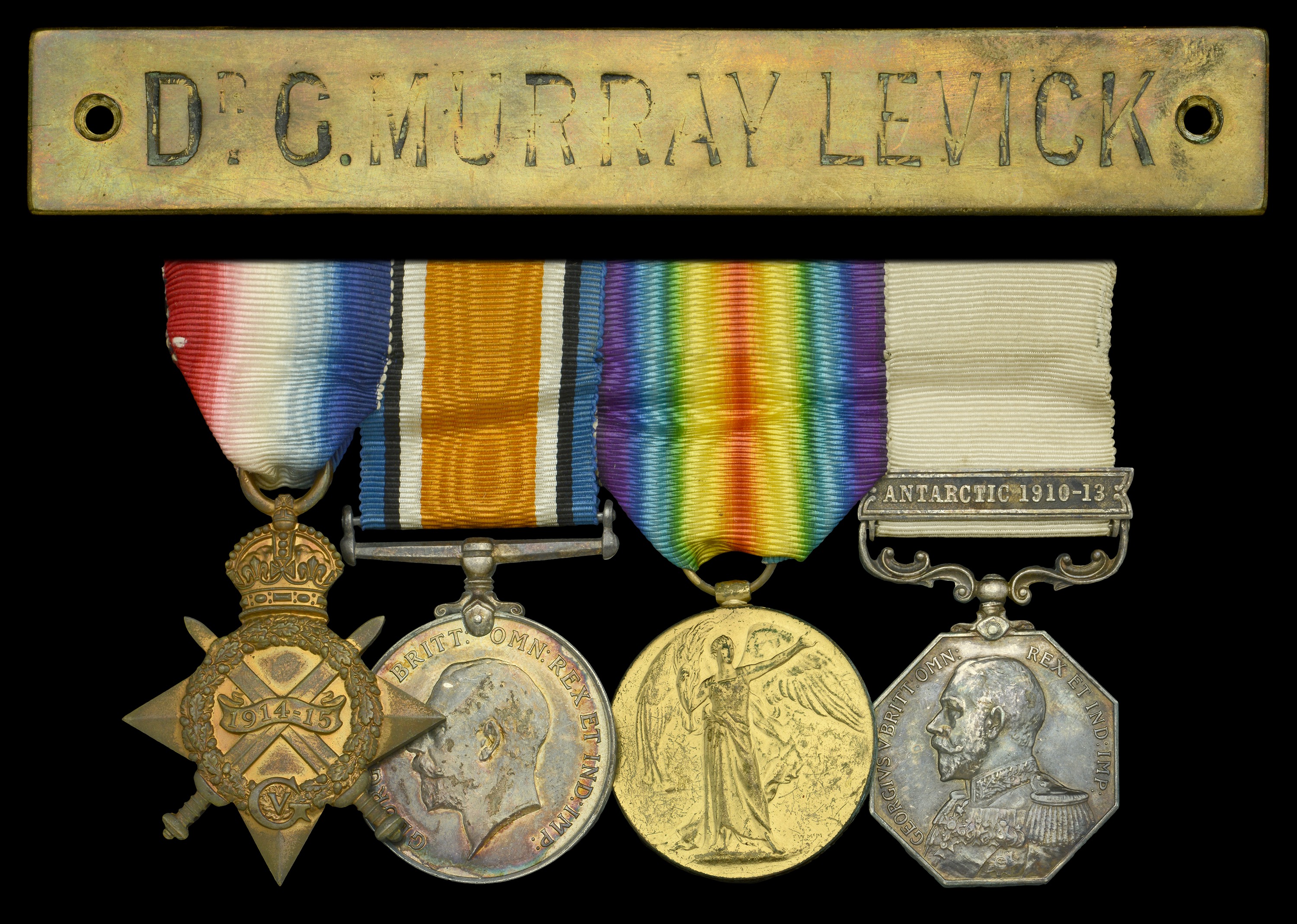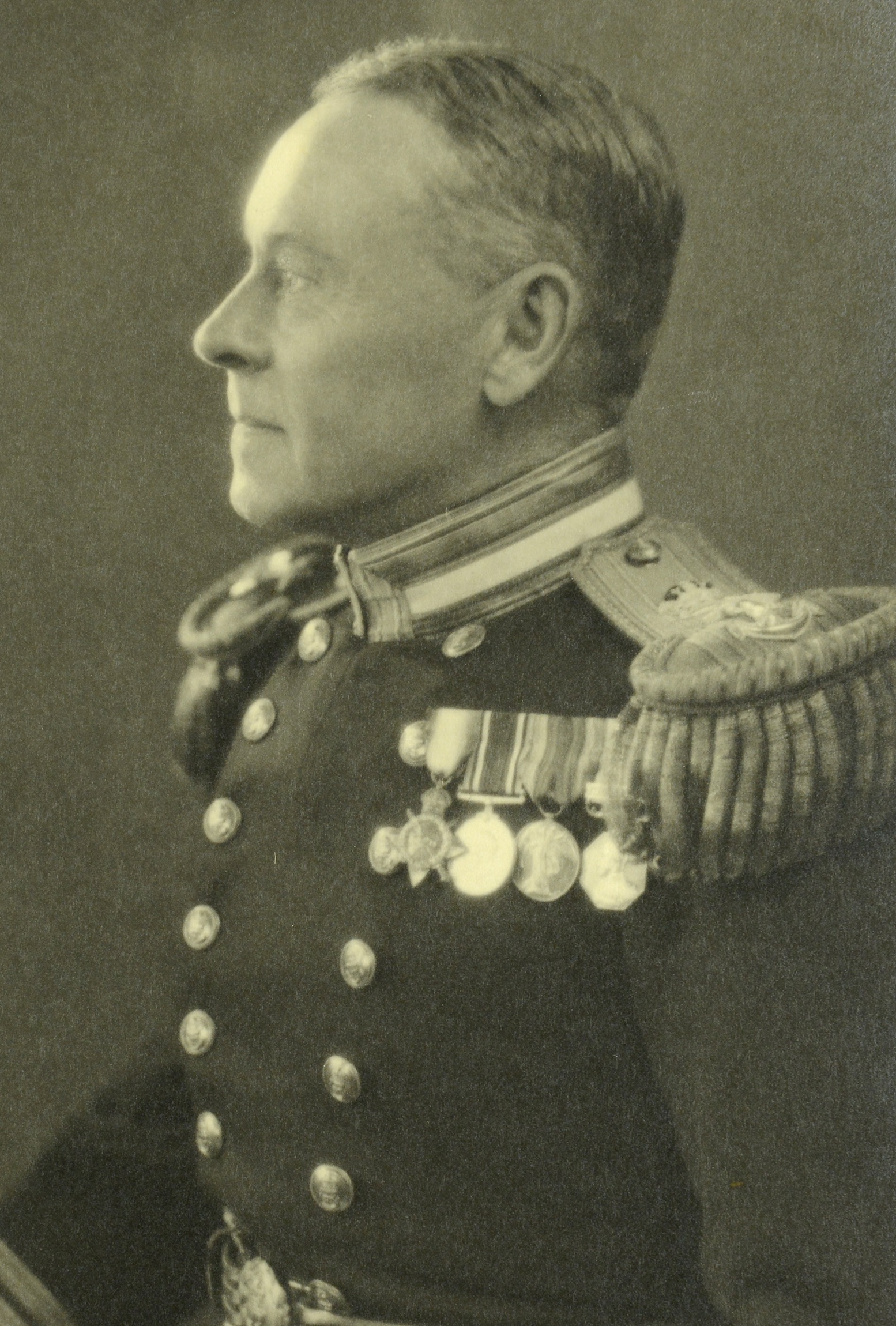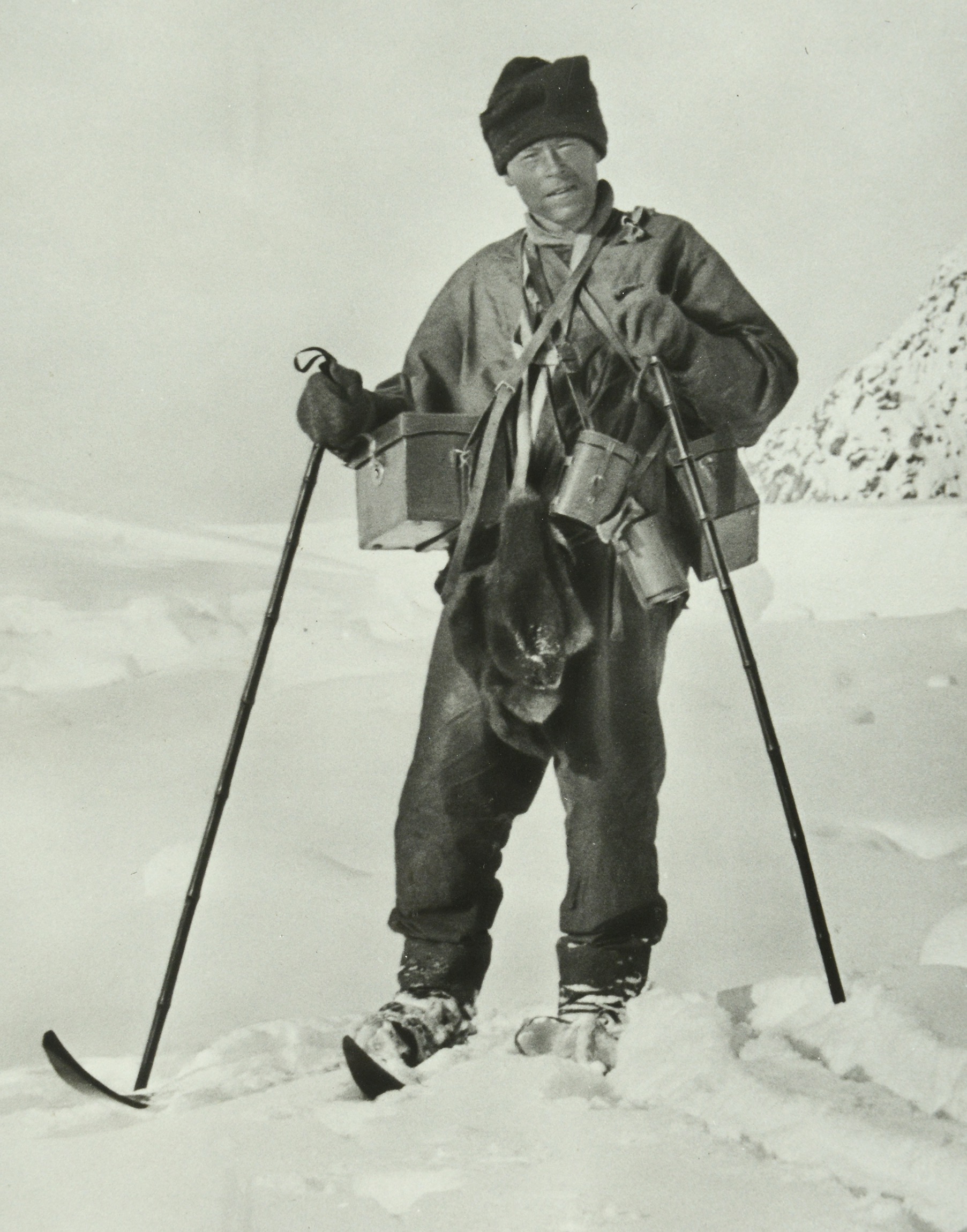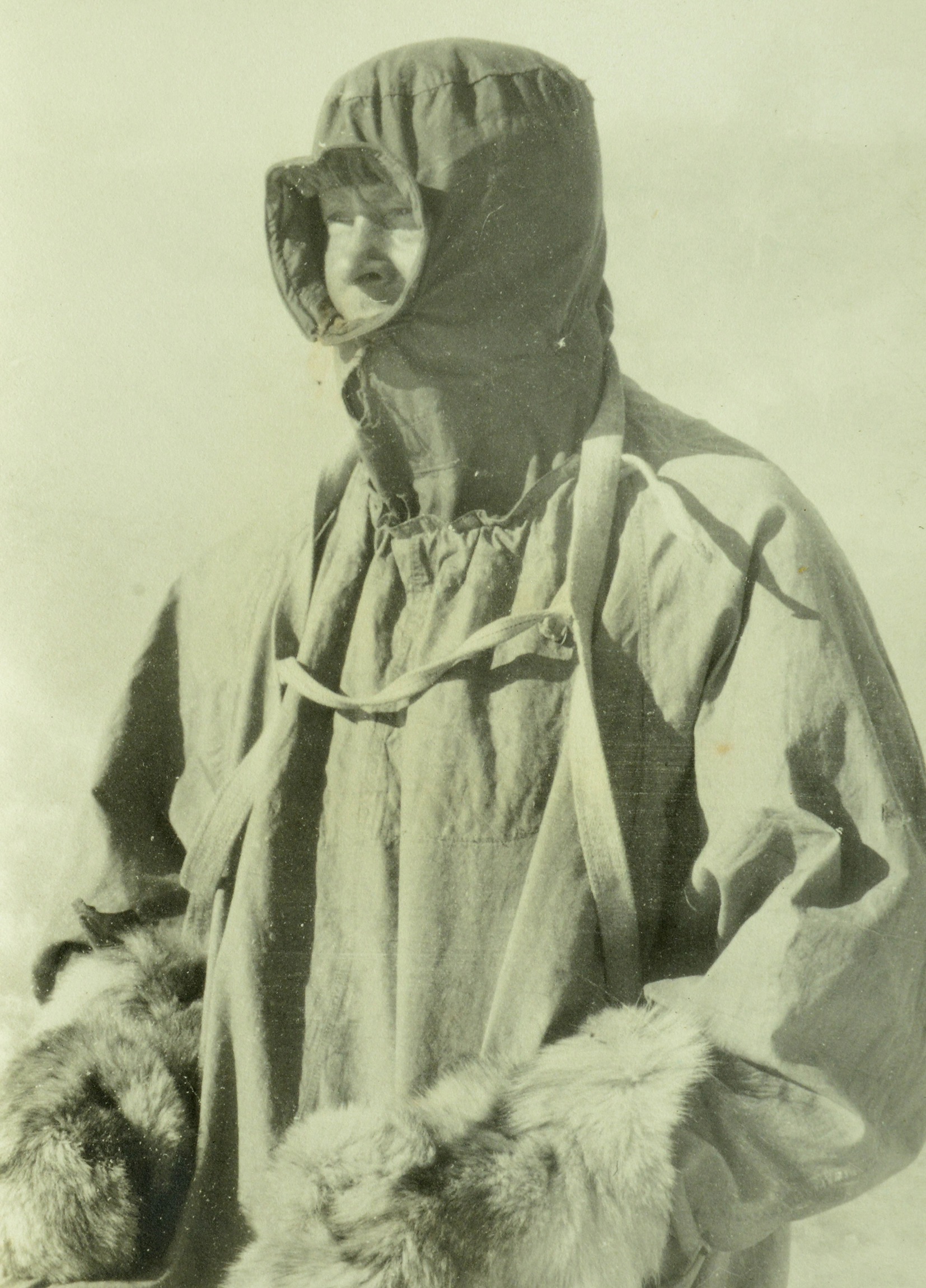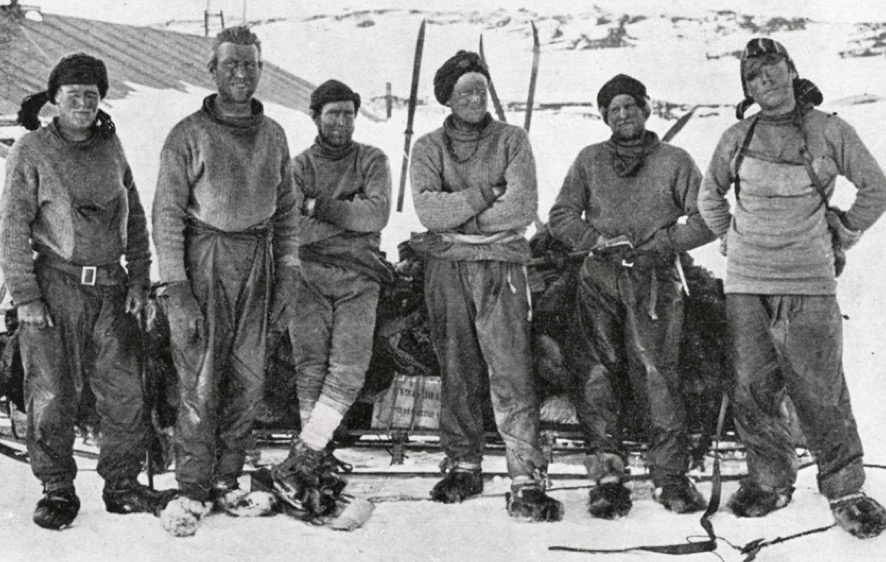‘They ate blubber, cooked with blubber, had blubber lamps. Their clothes and gear were soaked with blubber, and the soot blackened them, their sleeping-bags, cookers, walls and roof, choked their throats and inflamed their eyes. Blubbery clothes are cold, and theirs were soon so torn as to afford little protection against the wind, and so stiff with blubber that they would stand up by themselves, in spite of frequent scrapings with knives and rubbings with penguin skins, and always there were underfoot the great granite boulders which made walking difficult even in daylight and calm weather. As Levick said, “the road to hell might be paved with good intentions, but it seemed probable that hell itself would be paved something after the style of Inexpressible Island.” ’ The grim realities of life as a stranded member of the Scott’s Northern Party, as summarised by Apsley Cherry-Garrard in The Worst Journey in the World. The important Polar Medal group of four awarded to Fleet Surgeon G. M. Levick, Royal Navy, who served in the Northern Party in Scott’s Antarctic Expedition 1910-13 and also acted as a zoologist and photographer The story of the Northern Party’s fight for survival is one much imbued with the spirit of the ‘Golden Age of Polar Exploration’, and a story of survival that rightly won wide admiration; of Levick’s zoological contribution to the expedition, he undertook a pioneering study of Adélie penguins, his findings finally appearing in Antarctic Penguins in 1914 Specially advanced to Fleet Surgeon for his services in Antarctica, he went on to witness active service in H.M.S. Bacchante off Gallipoli and latterly trained Commandos in the art of survival in extreme conditions in the wilds of Scotland 1914-15 Star (Ft. Surg. G. M. Levick. R.N.); British War and Victory Medals (Ft. Surg. G. M. Levick. R.N.); Polar Medal 1904, G.V.R., 1st issue, silver, 1 clasp, Antarctic 1910-13 (Surgeon G. M. Levick. R.N. Terra Nova.) mounted as worn, good very fine (4) £20,000-£24,000 --- Importation Duty This lot is subject to importation duty of 5% on the hammer price unless exported outside the UK --- --- A total of 59 silver medals or clasps were awarded for Scott’s Last Expedition, of which 33 were to the Shore Party and only 11 to Naval or Military officers. Levick was one of two Surgeons present on the expedition. George Murray Levick was born in Newcastle on 3 July 1876, the son of a civil engineer, George Levick, and his wife Jeannie; his elder sister was the sculptor Ruby Levick, who exhibited at the Royal Academy. Levick studied medicine at St. Bartholomew’s Hospital and was commissioned as a Surgeon in the Royal Navy in November 1902. And it was in that capacity, and as a zoologist, that he applied for and was granted leave of absence to accompany Scott’s Antarctic Expedition of 1910-13. As a member of Scott’s shore party, Levick joined the Northern Party under the command of Lieutenant V. L. A. Campbell, together with Priestly the geologist and three seamen - Abbott, Browning and Dickason. What ensued became one of the great epics of exploration in Antarctica. Having spent the first 10 months of their northern sojourn at Cape Adare, where several journeys of exploration were carried out and extensive scientific observations taken, the Northern Party were embarked in the Terra Nova in January 1912 and proceeded to Evans Cove in Terra Nova Bay, where it was intended they carry out a six week expedition. As a result of adverse ice conditions, however, the Terra Nova was unable to come and pick them up, and Levick and his comrades were left stranded, with few provisions, and the daunting prospect of the imminent arrival of the Polar winter: what followed over the next nine months was a story of endurance and courage rarely matched in the annals of exploration. Wearing light summer clothing, and equipped with light tents, it was quickly apparent that if they were to survive more substantial shelter was required. To that end, the six-man team constructed a giant snow cave or igloo, from which they rarely ventured other than to hunt for seal and penguin. Such was Levick’s devotion to his fellow explorers during this perilous time, that he was affectionately nicknamed ‘Mother’. In early August the sun returned and Levick and his comrades prepared the sledges for the return to Cape Evans. Setting off on 30 September 1912, they reached Cape Roberts four weeks later, having in the interim come upon the welcome contents of an old depot left by Shackleton’s 1907-09 expedition. In fact they discovered yet further supplies at Cape Bernacci and at Butter Point, discoveries that enabled their safe return to ‘Hut Point’ on 6 November, but, here, of course, they learnt of the tragic fate of Scott and his party. A full account of the Northern Party can be found in Antarctic Adventure, Scott’s Northern Party by R. E. Priestly, while the diary kept by Commander V. L. A. Campbell is to be found in Scott’s Last Expedition, Volume II. Levick is mentioned throughout in both accounts and appears in several photographs. His study of penguins was published by Heinemann as Antarctic Penguins in 1914 and some 30 of his photographs were reproduced in Scott’s Last Expedition, Volume II. On his return to naval duties, Levick was specially promoted to Fleet Surgeon and served off Gallipoli in H.M.S. Bacchante and in the Grand Fleet. And following his retirement, he pioneered the training of blind people in physiotherapy and established the Public Schools Exploring Society in 1932, which took groups of schoolboys to Scandinavia and Canada, and he remained its president until his death. Shortly after the renewal of hostilities in September 1939, Levick, who was then 64, took up the role of a specialist in guerilla warfare at the Commando Special Training Centre at Lochailort, Scotland. He taught fitness, diet and survival techniques, many of which were published in the training manual Hardening of Commando Troops for Warfare in 1944. Moreover, he was enlisted as a consultant for Operation ‘Trace’, a plan for hiding a small observation party in a secret chamber, dubbed ‘The Stay Behind Cave’, in the event of Gibraltar falling to the Axis. On his death in May 1956, Levick was the subject of numerous obituaries, Major D. Glyn Owen of the British Exploring Society writing: ‘A truly great Englishman has passed from our midst, but the memory of his nobleness of character and our pride in his achievements cannot pass from us. Having been on Scott’s last Antarctic expedition, Murray Levick was later to resolve that exploring facilities for youth should be created under as rigourous conditions as could be made available. With his usual untiring energy and purposefulness, he turned this concept into reality when he founded the Public Schools Exploring Society in 1932, later to become the British Schools Exploring Society, drawing schoolboys of between 16 and 18 years to partake in annual expeditions abroad into wild and trackless country … ‘ Sold with a large quantity of photographs (approx. 140 images), mainly of penguins and taken by Levick on the Expedition, some of them mounted in a pair of old albums, together with two images of him in Antarctica and a studio portrait of him in uniform, wearing his Polar Medal. Note: Levick’s original polar journal was sold at Christie’s in April 2000 for £93,950.
















